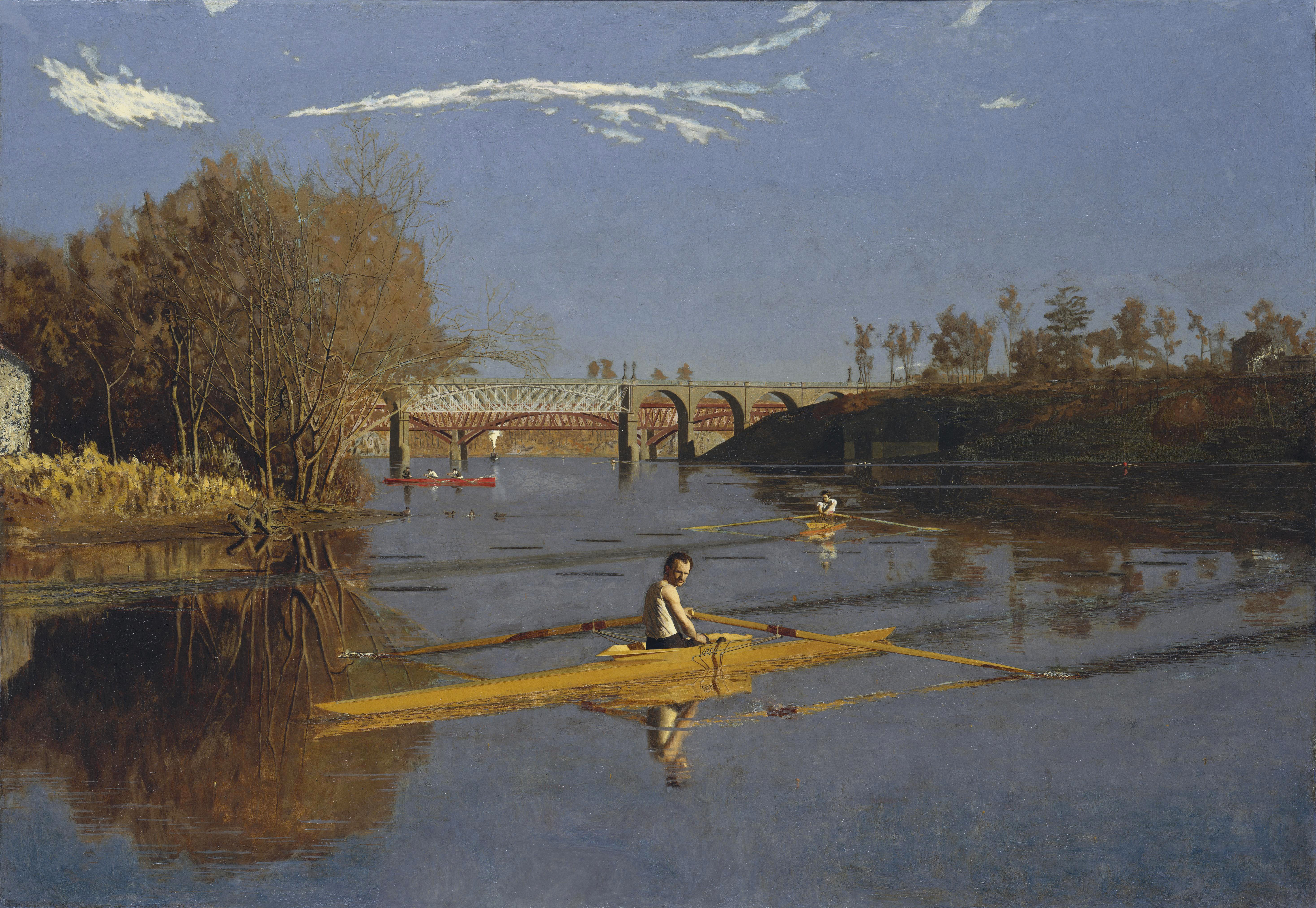Eakins, << AY kihnz, >> Thomas (1844-1916), was one of the greatest American Realist painters of the 1800’s. He painted portraits and many scenes of outdoor life and sporting events, such as swimming, sculling, hunting, and prize fighting. Eakins brought great vitality and deep human insight to his art. He tried to achieve scientific accuracy and painstaking detail without losing feeling. The colors are fairly dark in his indoor paintings and portraits, but he captured the subtle effects of light and atmosphere in his outdoor scenes.

Eakins’s most famous portraits include Walt Whitman (1888), The Thinker (1900), and two group portraits, The Clinic of Dr. Gross (1875) and The Clinic of Dr. Agnew (1889). Among his famous outdoor paintings is Max Schmitt in a Single Scull (1871).
Eakins was born on July 25, 1844, in Philadelphia. He began his art training at the Pennsylvania Academy of Fine Arts, and studied anatomy at Jefferson Medical College in Philadelphia. In 1866, he went to Paris to study at the Ecole des Beaux-Arts, where he stayed three years. He then spent several months in Spain. When he returned to the United States in 1870, he established himself as a portrait painter in Philadelphia. He painted portraits of members of his family and of his friends, mostly musicians and doctors. But he did not gain widespread public or critical acceptance. He taught at the Philadelphia Academy and lectured on anatomy at various other art schools. Eakins helped develop photographic techniques for studying the human body in motion. He was also a sculptor. Eakins died on June 25, 1916.
